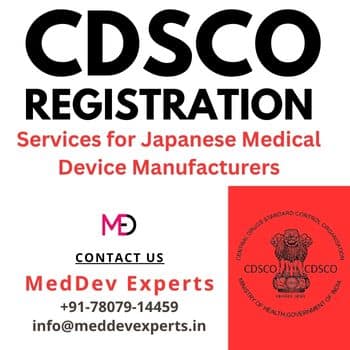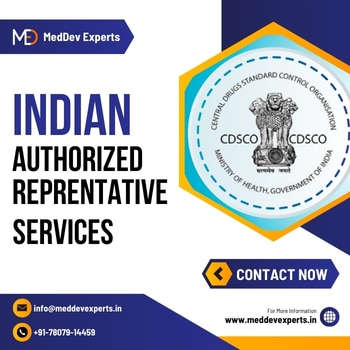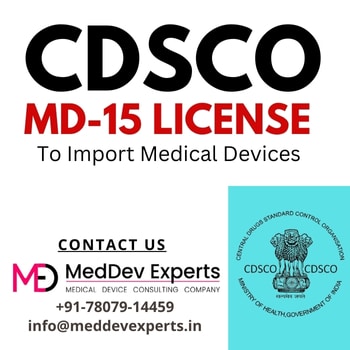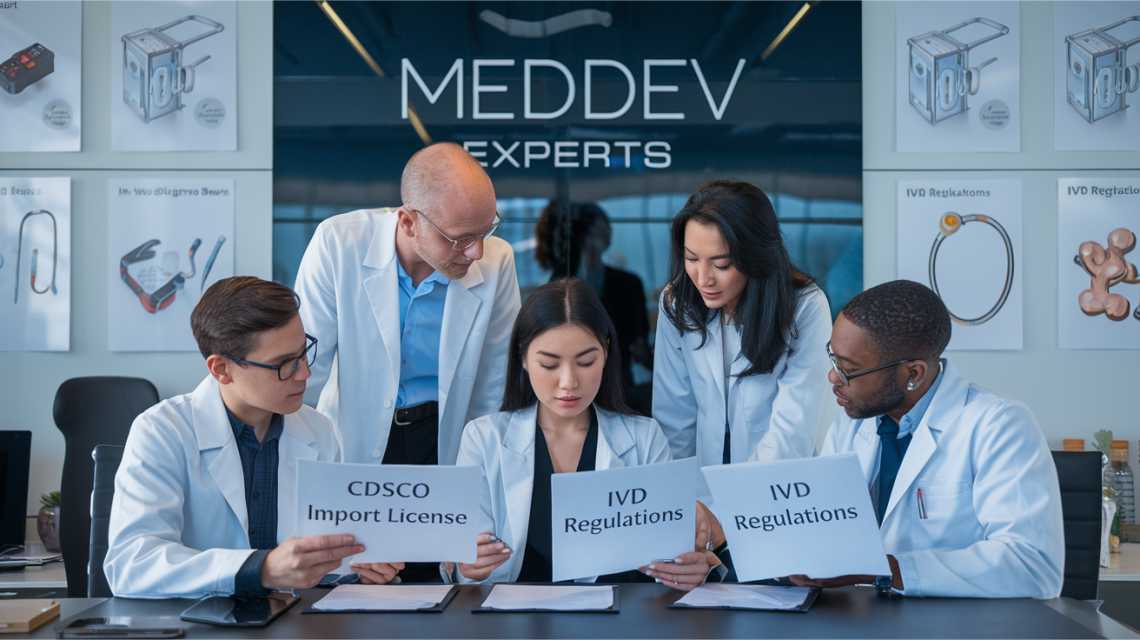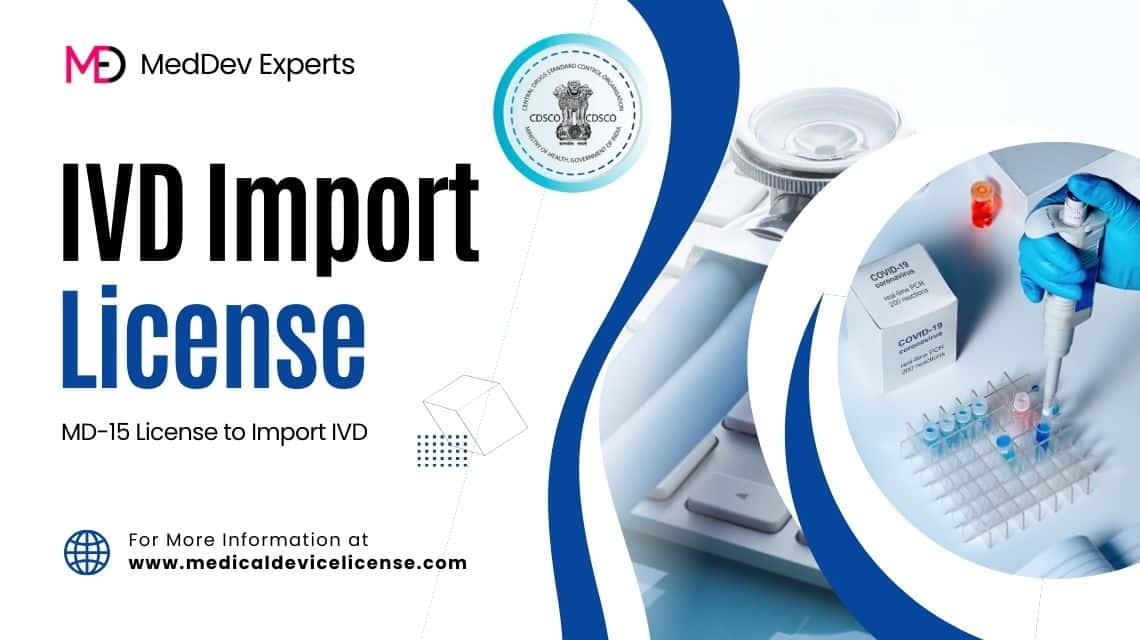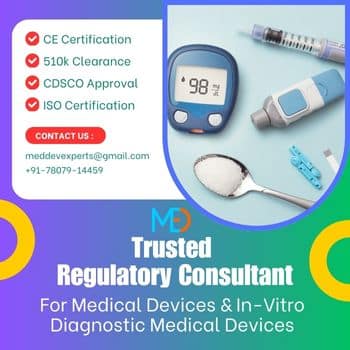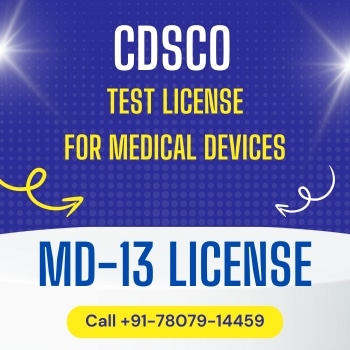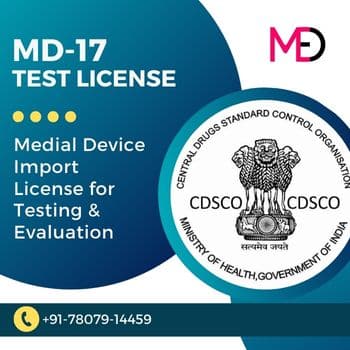CDSCO Import License for IVDs: In-Vitro Diagnostic Devices
Are you navigating the complex world of In-Vitro Diagnostic (IVD) medical devices in India? The Central Drugs Standard Control Organization (CDSCO) has established a comprehensive regulatory framework that can seem daunting at first glance. From classification systems to licensing processes, the journey to bringing your IVD products to the Indian market is filled with crucial steps and requirements.
But fear not! Whether you’re a manufacturer, importer, or distributor, understanding the CDSCO’s regulations is key to your success. This post will demystify the intricate process of obtaining an import license for IVDs, guiding you through everything from risk-based classifications to post-market surveillance. We’ll explore how the Sugam online portal is revolutionizing approvals, dive into the mandatory documentation, and even touch on the critical aspects of quality management.
Join us as we unravel the complexities of IVD regulations in India, providing you with the knowledge to navigate this landscape confidently. From timelines and fees to renewal processes and expert insights, we’ve got you covered. Let’s embark on this regulatory journey together, ensuring your path to compliance is clear and achievable.
Understanding CDSCO's Regulatory Framework for IVDs
A. Overview of CDSCO and its role in regulating medical devices
The Central Drugs Standard Control Organisation (CDSCO) is India’s primary regulatory body overseeing the import, manufacture, and sale of medical devices, including In-Vitro Diagnostic (IVD) devices. Under the Medical Device Rules 2017, CDSCO has established guidelines to ensure manufacturers and importers comply with safety and effectiveness standards.
Key responsibilities of CDSCO:
- Regulating all IVDs
- Establishing safety and efficacy standards
- Issuing licenses for importing IVDs
- Conducting inspections and audits
B. Classification of IVDs based on risk categories
CDSCO classifies IVDs into four risk-based categories:
| Class | Risk Level | Examples |
|---|---|---|
| A | Low | Laboratory reagents |
| B | Moderate | Blood glucose test strips |
| C | High | Hepatitis testing kits |
| D | Highest | Genetic testing kits |
C. Key regulations: Medical Devices Rules 2017
The Medical Devices Rules 2017 form the cornerstone of IVD regulation in India. These rules outline:
- Classification system for IVDs
- Licensing procedures for different device classes
- Requirements for clinical performance evaluations
- Guidelines for grouping similar devices in applications
- Labeling and documentation requirements
Importers must adhere to these regulations, which include:
Securing import licenses
Conducting clinical performance evaluations
Maintaining compliance through inspections and audits
With this understanding of CDSCO’s regulatory framework for IVDs, we’ll next explore the specific classification criteria for In-Vitro Diagnostic Medical Devices in the following section.
CDSCO Classification for In-Vitro Diagnostic Devices (IVDs)
Class A IVDs
Class A IVDs are considered low-risk devices with minimal potential for harm. These products typically include:
Laboratory reagents
Instruments used solely for in vitro diagnostic procedures
Specimen receptacles
Class B IVDs
Class B IVDs are moderate-risk devices that require more oversight than Class A. Examples include:
- Pregnancy self-testing kits
- Urine test strips
- Cholesterol testing devices
Class C IVDs
Class C IVDs are high-risk devices that can have a significant impact on patient health. This category includes:
HIV blood screening tests
Blood glucose monitoring systems for diabetes management
HLA typing reagents
Class D IVDs
Class D IVDs represent the highest risk category and are subject to the most stringent regulatory controls. Examples include:
- Tests for detecting the presence of transmissible agents in blood donations
- HIV diagnostic tests
- Hepatitis C virus testing kits
Understanding these classifications is crucial for manufacturers and importers, as it determines the level of scrutiny and documentation required for CDSCO approval. With this classification system in mind, let’s explore the licensing process for IVDs in India.
Now that we have covered the CDSCO classification for IVDs, let’s delve into the licensing process for these devices in India.
A. Import License for IVDs requirements and procedures
The import of In-Vitro Diagnostic (IVD) medical devices in India is regulated under the New Medical Device Rules, 2017. Key requirements include:
Compliance with basic regulatory norms
Classification of the device (Class A, B, C, or D)
Submission of necessary documentation
B. Import License for IVDs application process
The application process involves several steps:
- Online application submission via SUGAM portal (Form MD-14)
- Approval of draft application by authorized agent
- Document submission, including: Regulatory approvals; Quality certifications; Device Master File
- Follow-up with regulatory authorities
- License issuance upon meeting all requirements
Distribution and sales of IVDs in India are subject to specific regulations:
Authorized Indian agents must hold relevant MD-42 License or Drug wholesale licenses
Multiple devices from the same manufacturer within identical risk categories can be covered in one application
With this comprehensive understanding of the licensing process for IVDs in India, we’ll next explore how the Sugam Online Portal is streamlining IVD approvals, making the process more efficient and accessible for stakeholders.
Sugam Online Portal: Streamlining Import License for IVDs
Now that we have covered the licensing process for IVDs in India, let’s explore how the Sugam Online Portal streamlines IVD approvals.
Features and functionalities of the Sugam platform
The Sugam platform, developed by CDSCO, offers a range of features to simplify the management of medical devices:
- Online application submission
- Application tracking
- Workflow-enabled system
- Timely alerts and notifications
- Analytical and statistical capabilities
These features contribute to a more efficient and transparent approval process for IVDs.
Step-by-step guide to submitting applications
To submit an application through the Sugam portal:
Register as a user on the platform
Access the consolidated database of permissions and licenses
Review industry guidelines and CDSCO-approved drug lists
Prepare necessary documentation
Submit the application online
Await notifications and alerts regarding application status
Tracking and managing licenses through the portal
The Sugam portal provides comprehensive tools for tracking and managing licenses:
| Feature | Description |
|---|---|
| Consolidated data access | Manufacturers can view permissions granted by the Licensing Authority |
| Application statistics | Users can monitor submitted application numbers |
| Approval information | Patients can access details on device approvals |
| User-related information | Consumers can find relevant data and guidelines |
Manufacturers benefit from the ability to access consolidated data about permissions granted to them by State FDAs. This centralized approach simplifies license management and ensures all stakeholders have access to up-to-date information.
With this streamlined process in place, the next crucial step is understanding the mandatory documents required for obtaining an import license for IVDs. This documentation is essential for a smooth approval process through the Sugam portal.
Mandatory Documents for Import License for IVDs
Power of Attorney
A Power of Attorney (POA) is a crucial document required for obtaining an import license for In-Vitro Diagnostic Medical Devices (IVDs) in India. This legal document authorizes a representative to act on behalf of the foreign manufacturer in dealing with CDSCO.
Must be notarized and apostilled
Specify the scope of authority granted
Include details of both the manufacturer and the authorized representative
The Device Master File (DMF) is a comprehensive technical document that provides detailed information about the IVD device. It typically includes:
- Executive Summary of the Device
- Reference to predicate or previous generations of the device
- Label & Instructions for Use
- Device Design and Manufacturing process with flow chart
- Essential Principles Checklist
- Risk analysis and control summary
- Design Verification and validation of the medical device
- Biocompatibility validation data
- Medicinal substances data if the device contains Drug
- Biological Safety (TSE/BSE)
- Sterilization Validation data, if the device is supplied in a sterile state
- Software verification and validation, if the device incorporates any software
- Animal studies Preclinical data
- Clinical evidence
- Post Marketing Surveillance data
- Analytical Studies
- Batch Release Certificates or Certificate of Analysis of finished product for minimum 3 consecutive batches.
The Site Master File (SMF) offers an overview of the manufacturing facility where the IVD is produced. Key elements include:
- Facility layout and design
- Production capacity and equipment
- Quality management systems in place
- Personnel qualifications and training programs
This document, issued by the regulatory authority of the country of origin, confirms that the IVD is freely sold in that country. It should:
Be less than 3 years old
Clearly state the name and address of the manufacturer
List all the specific IVD products covered
The ISO 13485 certificate demonstrates compliance with international quality management standards for medical devices. It should:
Be current and valid
Cover the scope of the IVD in question
Be issued by an accredited certification body
These delays can impact a manufacturer’s timeline for testing and importing medical devices, potentially affecting their overall market strategy.
With these challenges in mind, next, we’ll explore additional considerations that manufacturers should keep in mind when pursuing an MD 17 License. These factors will further inform your approach to navigating the licensing process effectively.
Post-Market Surveillance and Quality Management System
Now that we have covered the mandatory documents required for obtaining an import license for IVDs, let’s delve into the crucial aspects of post-market surveillance and quality management.
A. Importance of ongoing monitoring and reporting
Ongoing monitoring and reporting are essential components of the regulatory framework for IVDs in India. The CDSCO emphasizes the need for continuous surveillance to ensure the safety and efficacy of diagnostic medical devices. This process involves:
- Regular assessment of device performance
- Collecting and analyzing user feedback
- Monitoring for adverse events
- Implementing corrective actions when necessary
B. Quality management system compliance requirements
Compliance with quality management systems is a fundamental requirement for IVD manufacturers and importers. The CDSCO mandates adherence to specific standards, which include:
| Requirement | Description |
|---|---|
| Documentation | Maintaining comprehensive records of manufacturing processes and quality control measures |
| Internal Audits | Conducting regular audits to ensure compliance with quality standards |
| Risk Management | Implementing strategies to identify and mitigate potential risks associated with IVDs |
| Personnel Training | Ensuring staff are adequately trained in quality management procedures |
C. Handling adverse events and product recalls
In the event of adverse incidents or the need for product recalls, IVD manufacturers and importers must have robust procedures in place:
- Establish a system for receiving and documenting adverse event reports
- Conduct thorough investigations into reported issues
- Implement corrective and preventive actions (CAPA) as necessary
- Communicate effectively with regulatory authorities and stakeholders
- Initiate and manage product recalls when required
The CDSCO emphasizes the importance of timely reporting and transparent communication during these processes to maintain public trust and ensure patient safety.
With this comprehensive approach to post-market surveillance and quality management, the regulatory framework for IVDs in India aims to maintain high standards of safety and efficacy. Next, we’ll explore the timeline for CDSCO Import License for IVDs.
Timeline for CDSCO Import License for IVDs
Application Processing Time
The timeline for obtaining a CDSCO Import License for In-Vitro Diagnostic Medical Devices (IVDs) can vary depending on several factors. Generally, the process may take anywhere from 3 to 8 months from the initial application submission to final approval.
Factors Affecting Timeline
Several factors can influence the duration of the licensing process:
- Completeness of application
- Complexity of the IVD device
- Current workload of CDSCO
- Response time to queries
- Quality of submitted documentation
Tips to Expedite the Process for Import License for IVDs
The Sugam portal provides comprehensive tools for tracking and managing licenses:
- Ensure all required documents are complete and accurate
- Respond promptly to any queries from CDSCO
- Submit high-quality technical documentation
- Consider engaging a regulatory consultant for guidance
With these timelines in mind, it’s crucial for manufacturers and importers to plan their market entry strategies accordingly. The next section will delve into the fees associated with obtaining the CDSCO Import License for IVDs and the validity period of the license once obtained.
Fees & Validity of CDSCO Import License for IVDs
A. Fees
The fees for CDSCO Import License for IVDs vary based on the device classification. Here’s a breakdown of the fees structure:
| IVD Classification | License Fee (US$) | Retention Fee (US$) |
|---|---|---|
| Class A (Non-Sterile and Non-Measuring) | No cost (Registration only) | N/A |
| Class A (Sterile or Measuring) | 1,000 | 10 |
| Class B | 1,000 | 10 |
| Class C | 3,000 | 500 |
| Class D | 3,000 | 500 |
It’s important to note that Class A non-sterile and non-measuring devices only require registration and are exempt from the Import License process.
B. Validity
The validity of the CDSCO Import License for IVDs has undergone recent changes:
Import Licenses (MD Form 15) are now valid in perpetuity
Retention fees are due every five years to maintain the license
For Class A non-measuring/sterile devices, registration is immediate and allows for immediate importation
As of October 1, 2023, all Class A (Measuring and Sterile), B, C, and D medical devices must possess an MD-14/15 Import License for importation. The approval process involves submitting a comprehensive Device Master File (DMF) for each product and a Plant Master File (PMF) for the manufacturing facility.
Now that we’ve covered the fees and validity, let’s explore the post-market surveillance and quality management requirements for IVDs in India.
Renewal of CDSCO Import License for IVDs
Renewal Process
The renewal process for CDSCO Import License for IVDs is a critical step to ensure continuous compliance and uninterrupted import of In-Vitro Diagnostic Medical Devices. Importers must initiate the renewal process at least 90 days before the expiration of their current license. This proactive approach helps avoid any potential delays or disruptions in the import process.
Key Steps in Renewal
Compliance with quality management systems is a fundamental requirement for IVD manufacturers and importers. The CDSCO mandates adherence to specific standards, which include:
Document preparation
Online application submission
Fee payment
Review and assessment
License issuance
Required Documents
- Current import license
- Updated product information
- Quality management system certificates
- Recent manufacturing site inspection reports
- Post-market surveillance data
MedDev Experts: A leading consultant for CDSCO Import License for IVDs
Why Choose MedDev Experts?
MedDev Experts stands out as a premier consultant for CDSCO Import License for IVDs due to our extensive experience and comprehensive services. Our team of regulatory experts offers unparalleled guidance throughout the complex licensing process.
Key Services Offered
- Regulatory strategy development
- Document preparation and submission
- Post-market surveillance support
- Quality management system implementation
Industry Expertise
The MedDev Experts’ deep understanding of IVD regulations and CDSCO requirements sets us apart. We stay updated with the latest regulatory changes, ensuring clients receive the most current advice.
Mastering CDSCO IVD Import License in India demands regulatory expertise & the Sugam portal. Ensure compliance, navigate classifications, and understand post-market needs for India’s IVD market. Stay updated for smooth approvals.

